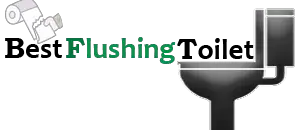You may have been encountering some acute problems with your toilet. If you are having a sound sleep, and suddenly you hear something ghostly from the toilet. It must be a ghost, right? This phenomenon happens when the toilet mechanism collapses. The bathroom toilet is one the most common thing for wastewater, but a leaking toilet may be less objectionable than a dripping faucet. Still, a leaking toilet could cost you hundreds of dollars, and your water bill will get increased. There are several smart steps to detect if a toilet is leaking. In this article, I will discuss solutions to this acute incident. Let us dig deep into the matter.
What is ghost flushing?
Have you ever heard of ghost flushing? Do not panic because it is not related to any horror ghost story. Ghost flushing or phantom flushing is a kind of flushing where the toilet tank is filled automatically, and guess what? It is flushed automatically without pressing the flush button. Isn’t this ridiculous? It happens if there is an internal fault in the mechanisms of the toilet.
Possible causes of an empty toilet tank with no leakage include:
You can find tons of causes behind the leakage of the toilet. Some of the most common causes are depicted here,
The Flapper is out of Order
The Flapper reaches a position where it becomes warped or damaged and does not provide a watertight seal on the flush valve. Intank special kinds of toilet cleaners can damage the Flapper badly. The Flapper’s internal trip lever or chain may loosen its basic alignment with the flush valve, which creates a gap that can cause a leak. The flush valve can produce small cuts or other damage that causes a leak between it and the Flapper. This is always caused by acute grit or obstinate sediment. The particular fill valve can get stuck in an open position which makes water waste as it is left out through the overflow tube. This can happen when the water pressure fluctuates heavily.
Water tank chipped
If you see some sort of water on the floor of the toilet, then there might be some kind of leakage in the water tank or the tank bowl; the chipping of the toilet tank is a common problem if you buy low-quality products. The repairing works are not always effective as the sealants get shattered over time, and as time advances, the power of the sealants becomes lean. This is one of the biggest causes of toilet tank leakage.
Rusted fill valve
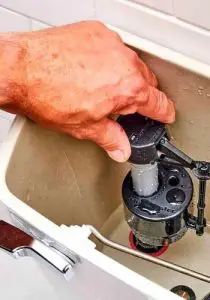 The fill valve is the main commanding part that enters the water in the toilet tank. The fill valve gets corrupted due to excessive mineral compounds in the water. Dust, iron, and other dissolved elements in water create rust, rot, corrosion, and damage to the fill valve. So to terminate this problem you can use toilet cleaners and disappear the old rust. If it is not possible, then seek help from a professional and get the fill valve fixed as soon as possible.
The fill valve is the main commanding part that enters the water in the toilet tank. The fill valve gets corrupted due to excessive mineral compounds in the water. Dust, iron, and other dissolved elements in water create rust, rot, corrosion, and damage to the fill valve. So to terminate this problem you can use toilet cleaners and disappear the old rust. If it is not possible, then seek help from a professional and get the fill valve fixed as soon as possible.
Defected connectors
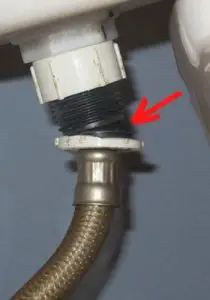 There are hundreds of connectors in the toilet setting and management. These connectors make it possible to convey water in the toilet successfully. But some outdated connector might have gathered so much dust and iron that it becomes corroded. So the better way is to check every possible connector when the water supply valve is activated. Then if you find the faulty location, then check all the washers and connecting segments if they are leaking. Use the thread tape to block the leakage and resettle them again. This is why most professionals advise homeowners to get their plumbing systems regularly checked so as to ensure that there are no damaged or worn-out parts. If you find broken components, get them replaced as soon as possible.
There are hundreds of connectors in the toilet setting and management. These connectors make it possible to convey water in the toilet successfully. But some outdated connector might have gathered so much dust and iron that it becomes corroded. So the better way is to check every possible connector when the water supply valve is activated. Then if you find the faulty location, then check all the washers and connecting segments if they are leaking. Use the thread tape to block the leakage and resettle them again. This is why most professionals advise homeowners to get their plumbing systems regularly checked so as to ensure that there are no damaged or worn-out parts. If you find broken components, get them replaced as soon as possible.
How do you diagnose toilet leaks?
The toilet must have been yielding a loud refill noise only when the tank is refilling immediately after a flush. It does not generally make a loud noise all the time. Suppose the toilet makes a noise unnecessarily that requires a close examination of the internal toilet parts. You may have a leak, or the Flapper may need to be adjusted. A large and extensive leak will make moving water in the toilet bowl incessant. After refilling the tank, water is also running downwards in the toilet bowl.
If you see any sort of stubborn rust stains inside them, that might indicate metal parts inside the tank. To check for smaller leaks, place some food coloring in the tank and wait for some minutes. If there is some sort of color in the toilet bowl, then it must have been a leakage issue. The sooner the color appears, the larger the leak. There are non-toxic leak detection tablets available to remove the toilet bowl’s discoloration. Check the water use; the municipality is reinstating a citywide Automated Meter Reading system that will evaluate all water meters at least four times a day and can provide an early warning of leakages.
How do you find the exact water leakage location?
Leakage is an acute type of issue that is really common in the context of the toilet surroundings. To find the leakage locations of the toilet, first of all, take off the lid from the toilet tank. Then apply some drops of food coloring or a few dye tablets. Stir the water in the tank for about half an hour. After half an hour, check the condition of the water.
Do not flush the toilet until it is half an hour. Look in the bowl, and if the coloring has seeped from the tank into the bowl, you have a toilet leakage issue. If the float is not adjusted appropriately, water will continue incessantly to fill the tank and then drain the overflow tube down. Pull up on the float, and if you see the water stop running, you have to adjust the float. The fill valve or the inlet valve is not set properly or might be malfunctioned. Try adjusting the fill valve, and it makes a hiss or a rattling sound when filling. You need to replace it, and if a black and stubborn residue rub off when you get into the Flapper, it’s time to replace it.
It’s not only the toilet. You may have encountered some other locations in the washroom that are causing the incessant flow of water due to acute leakage problems,
How to locate the faulty faucets?
You will be surprised to know that an incessantly dripping faucet can waste about twenty gallons of water per day; even if you are not wasting the water, it goes through your water meter, so you have to pay for the unknown cause of wastage of water. Faucets generally leak or drip because the washers must have gone out of order. Washerless faucets possess one kind of special ring that is capable of resisting wear and leaks. Replacing the washers or those special rings is too easy.
You can solve it by yourself but if the case is not the same, then take help from professionals. You may save the cost of fixing the faucet in just a few days with a comparatively decreased water bill. If you have a special type of faucet in an out-of-the-way, then place that and examine it on a methodical basis to help it prevent leaking.
Check the toilet tank parts
If you see the water is incessantly running into the bowl or water running is still audible, there is probably a leak. The event doesn’t watch or hear water running. There may have been a leak. It is a fantastic way to check for a silent leak by applying a few drops of food color into the toilet tank.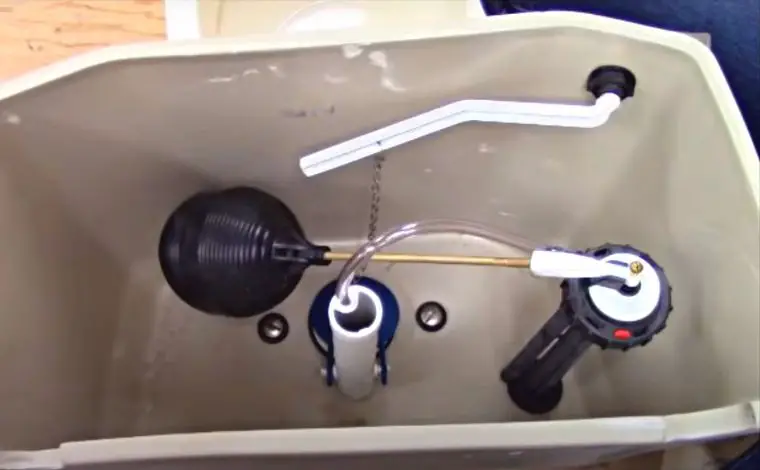
Wait for some time and then flush the toilet. If you notice the color in the toilet bowl, then there must be an acute leakage. The leak is probably all over the plunger ball or flapper valve at the bottom portion of the tank. Scrutinize the ball valve and drop it carefully into the opening of the drain. Clean it deeply or replace the ball valve when it gets worn out. These leaks are easy to fix with parts and advice from a hardware or home store. Many toilet leaks happen at the overflow pipe. If you want to pinpoint a leak, remove the lid from the toilet tank and then perform a flush.
The Weather must have come up to about an inch below the overflow pipe. The water has been wasted when the tank refills more after it flows downwards into the overflow pipe. You can measure the water level in the tank by maintaining the float level using the screw connected to the overflow pipe. The level of the float refers to how high the water gets before the valve shuts off the water intruding into the tank. If the overflow pipe is damaged and you are losing water, then the pipe should be replaced without any further delay.
Locate the damaged drainage pipe
You will find it difficult to find the broken pipes, especially if the pipes are situated in a crawl space or within walls. Search for the disguised wet areas or water stains on walls. Broken pipes leaking particular joints generally require a fixing process from the plumbers or professionals.
Check the water supply line
One of the most prominent leakage locations is the External water supply line. To remove the leakage problem from the water supply line, examine outside taps to find out if they are running or dripping. If you find the external tap is leaking, you need to fix or replace the washer. If you are encountering a hose running continuously, you can waste thousands of gallons of water in a season and give special attention to turning off faucets tightly.
What to do if your toilet tank is losing water but has no leak?
The process of repairing the leakage of the toiler is an extensive process, and it needs proper synchronization to eliminate the problem. In this phase, I will describe the easiest ways to repair toilet leaks,
 Repairing the Flapper and fill valve
Repairing the Flapper and fill valve
A worn-out and damaged flapper is the most crucial culprit for creating leakage in the toilet. Apart from the colored liquid test, there are other smart options you must know if you need to replace the Flapper. Simply rub the bottom segment of the Flapper with the pressing of a finger. If you notice streaks of rubber, it’s ready to be replaced. If the Flapper appears to be smooth and flexible but is now hard, it’s the ideal time to replace of the Flapper,
- Shut off the water valve. This is usually situated behind or beside the wall. Perform flushing of the water that is in the tank and notice the length of the flapper chain attached to the trip lever. It is really significant to note down this length, and it will save your precious time when you are replacing Flapper.
- Remove the old Flapper, install the new Flapper into the toilet and adjust the chain length as it was before you took the old Flapper off. Check the valve seat for corrosion or mineral build-up and clean it if necessary.
- Dry the valve seat and sand it smooth with fine sandpaper. Take care of not causing any damage or large scratches that could lead to more leaking.
- Turn on the water at the supply line and do the leaky toilet test again to ensure the leak has been repaired.
The fill valve is the most crucial part of the toilet, and if it faces any kind of inconvenience, then you must be very careful about replacing the fill valve. If the fill valve is obstructed due to some foreign material, then clear them immediately.
Repairing the flushing handle
The chain controlling the Flapper needs an adjustment to properly cope with the valve seat. The toilet chain that is attached to the trip lever may also be getting caught on something or may have a kink that can cause intermittent leaks. It can also repeat itself when the toilet is flushed the next time. 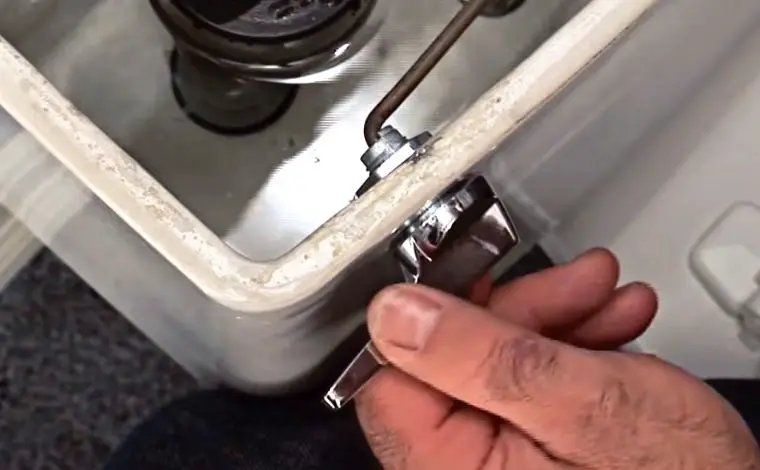
For fixing the chain, the very first thing you need to do is to clean it and ensure that it isn’t too long or too small for the correct positioning of the Flapper. If the chain is kinked or distorted, it must be replaced with a chain sizing like a ball-type. Tighten the lock nut and bolt that keeps the toilet handle to adjust the trip lever. If this fails, the handle may need to be replaced. Do not forget to shut off the water at the valve before replacing the chain or handle. That is how you can repair the flushing handle.
Fixing the overflow tube
It is a general thought that if the level of water in the particular tank is too high, it may incessantly spill over the overflow tube, which will produce a large leaking issue. The stAccordingthe experts are above standard water level but 1.5 to 2.5 centimeters under the top of the overflow tube. So you need to lower your tank water level and turn the float rod after adjusting the pertinent screw clockwise to lower the water level. If there is a float ball, you also need to gently bend the metal float arms gently, just the float cup adjacent to the metal adjusting rod. 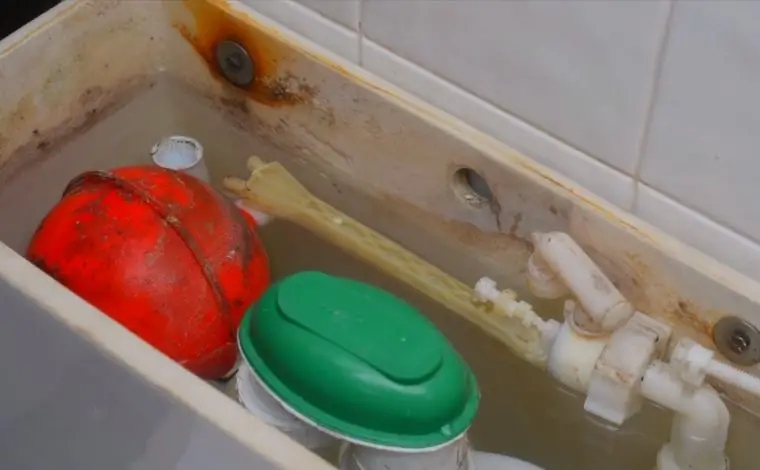
The next thing is to check the screw; if you find the screw corroded or stripped, then replace the screw immediately. Then perform a flush after adjusting the overall setup, and check if the water stops at the standard level. Make sure that the refill tube is secured inside the overflow tube. If these proceedings cannot lower the water level, then the float must have been clogged and need replacing, or the float assembly needed to be replaced as soon as possible. Some toilet models have float balls; others might have a float cup, so the strategy for adjusting the water level may be different from one to another. It is wise to check the toilet manufacturer’s website for details so that you can troubleshoot these various kinds of issues.
Adjust the water level
It is really crucial to have a standard level of water in the tank. If the water level is not up to the mark, then all the proceedings of the toilet mechanism will be destroyed, and to avoid this chore, it is a must to have a decent level of water.
- Examine if there are any kind of cracks or damage in the tank. If the tank is broken, then it is obvious that water will leak through the tick the supply hose of the toilet if it is working properly. If there are any sorts of debris, dust, and any other types of foreign particles in the hose, then it can not supply adequate water into the tank.
- Check the Flapper if it is running decently. A leakage in the rubber flapper may drain all the waterway to the bowl.
Conclusion
It is pretty much common that the tank is running without having a leakage problem, but the most surprising matter is that it is incessantly wasting water without some proper flushing. Fixing ghost leaks in the toilet is somewhat easy, and it doesn’t need any additional technical knowledge. But if you are not a professional in repairing and maintaining the toilet chores, you might have issues resolving the problems. So, it is wise to seek help from a professional plumber to do the hard work for you and eliminate the acute ghost flushing problem.
Hi, this is Robert Crossan, the owner of this website, has 17 years of experience in the installation, maintenance, and repair of toilets and plumbing systems. After completing the Level 2 Basic Plumbing course in 2005, I started working in both domestic and commercial buildings as a professional plumber. So I can figure out the core difference between different toilet models and brands. It also helped me monitor their work performance and setbacks.
